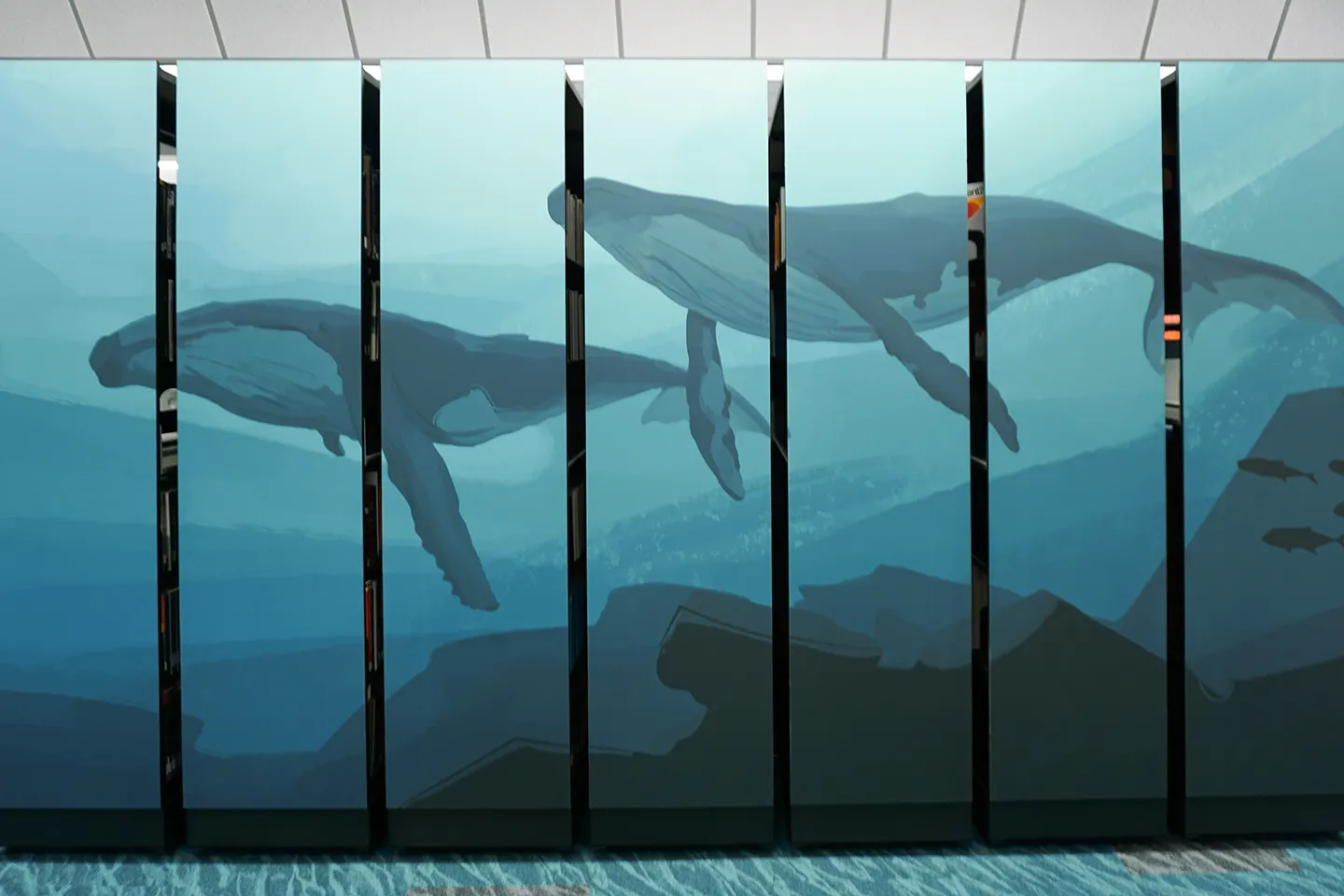Designing with Cutting-Edge Technology and Oceanic Inspiration in Mind
The project scope included a dedicated, enclosed area for the university's new Digital Scholarship Innovation (DSI) studio, which is a maker's space outfitted with 3D printing equipment, laser cutting machinery, and a holograph machine. The remainder of the space offered a modern twist on a traditional reading space, hosting high-density shelving carriages, leaving plenty of room for new banks of study tables and demountable group study rooms.
Instead of merely selecting colors and finishes, we actively sought to make the space as immersive as possible through new applications of our individual skillsets.”
Madeline Villena
Because the third floor of the SEL is dedicated to the astrophysicist Sandra Faber, the design team decided to highlight the oceanography career of Sullivan on the first floor. To achieve this, we used a color palette of blues and grays with green accents. Something we were particularly excited about was the use of mural graphics throughout the space to activate otherwise plain surfaces, such as the endcaps of the mobile shelving carriages. Within the walls of the DSI studio, we installed a vinyl graphic that incorporated a 3D printing infill pattern while evoking organic geometry that might be found in a coral reef. As designers, working on the ocean-themed mural graphic was an out-of-the-box way to integrate our experience with manual illustration. We were excited to create something that would be entirely unique to UC Santa Cruz.
 We collaborated with the university to embrace elements of the sea in our design of the floor. The outcome: an oceanic super-graphic produced in-house to clad the new high-density shelving units, a deep blue color palette, and dynamic patterned flooring to invoke the essence of moving water.
We collaborated with the university to embrace elements of the sea in our design of the floor. The outcome: an oceanic super-graphic produced in-house to clad the new high-density shelving units, a deep blue color palette, and dynamic patterned flooring to invoke the essence of moving water.
Integrating Personal Design Experience to Create Unique Spaces
Working on a space that is designed for interdisciplinary practice among its users felt like the perfect channel for us to think in that same manner as designers, calling on our own personal knowledge of 3D printing and existing experience in illustration. Instead of merely selecting colors and finishes, we actively sought to make the space as immersive as possible through new applications of our individual skillsets.
Seeing this floor come together throughout construction was an exciting process that entailed collaboration with the university from start to finish. Our hope is that the library's end users enjoy the finished space as much as we enjoyed the process of designing it.